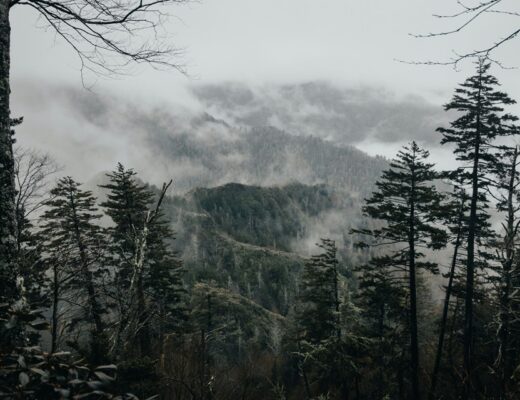- Tanzania’s diverse ecosystems and wildlife migrations create a unique safari backdrop.
- Choosing a safari type, operator, and timing can be tailored to individual preferences for a distinct experience.
- The proper preparation, culturally and practically, enhances the enjoyment and impact of the trip.
Understanding The Tanzanian Ecosystem
The Tanzanian ecosystem is a tapestry woven with diverse landscapes and abundant wildlife. Each environment offers a unique safari narrative, from the open savannas teeming with the “Big Five” to the verdant forests sheltering various bird species. Embarking on a Tanzania safari is not just about the thrill of animal sightings; it invites a profound respect for the natural cycles and the ecological balance that sustains this rich biodiversity. The annual spectacle of the Great Migration is a powerful testament to this, where the eternal struggle for survival and renewal plays out across the plains.
The Serengeti’s ecosystem, in particular, is a dynamic environment that revolves around seasonal changes. Predators and prey follow timeless migratory routes framed by climatic rhythms. Conservationists work tirelessly to maintain this delicate equilibrium, managing wildlife populations and habitats. With encroachments at the borders of these reserves, their work underpins the future of safaris, ensuring that visitors can continue to marvel at the natural wonders Tanzania has to offer.
Choosing The Right Safari Experience
Selecting the type of safari that aligns with your preferences is essential for fulfilling the dream of an African adventure. Tanzania offers a panorama of safari experiences, from the sumptuous comforts of luxury lodges to the rugged charm of camping under the stars. It is crucial to delve into the details of each option. Luxury safaris provide serene escapes with fine dining and exclusive game drives; budget safaris strip the experience down to its core, offering raw and authentic encounters with nature; and camping safaris connect travelers to the earth beneath their feet and the wild around them in a profound way.
Equally pivotal is the choice of a tour operator; they are the architects of your experience, capable of crafting an unforgettable itinerary or, conversely, leading to unfulfilled expectations. Due diligence pays dividends, requiring future safari enthusiasts to read reviews, ask questions, and select a company that aligns with their values and desires. Tour operators should be accredited with knowledgeable guides and a record of responsible environmental practices.
Timing adds another layer to the decision-making process. Specific periods offer prime wildlife viewing, while the wet, green season showcases newborn animals and certain tranquility difficult to find amid peak tourist months. The climate also plays a role; navigating the heat or relishing the cool breezes determines comfort and enjoyment.
Preparation & What To Pack
The anticipation of a safari is part of the African adventure, and thorough preparation is the key. First-time adventurers should compile a checklist that ensures they are equipped for Tanzania’s varying terrains and climates. Essential items include high-quality binoculars for distant animal spotting, sturdy footwear for nature walks, lightweight clothing for midday heat, and warmer layers for chilly mornings and evenings. Protecting oneself against the sun and insects is critical, so hats, sunglasses, and repellents are invaluable additions to your gear. Preparing for health and safety is equally imperative. Vaccinations against tropical diseases and prophylactics for malaria should be discussed with a healthcare professional well in advance. Understanding the signs of dehydration or heatstroke could be lifesaving in the African wilderness. Travelers should also acknowledge and adhere to local customs and etiquette to contribute positively to the trip. The grace with which visitors respect their hosts is often met with reciprocal warmth and enhances the richness of the cultural exchange.
Culture can be found in many places, from conversations with guides to the designs of lodge artworks. Tanzanians are, by and large, welcoming people who are proud to share their heritage. By respecting their customs, such as greeting elders first or dressing modestly in villages, guests show that they value the societal fabric of their hosts. This attention to detail fosters a more immersive and respectful safari experience.
Navigating Through Tanzania’s National Parks
The national parks of Tanzania are the crown jewels of its wilderness. The Serengeti National Park is synonymous with the quintessential safari, where the acacia-studded plains are home to elephant herds and the pride of lions, painting a picture of African wildlife that has enchanted many. The Ngorongoro Crater, often called ‘Africa’s Eden,’ is a microcosm of the savanna ecosystem, where an extraordinary number of species coexist within the walls of the world’s largest unbroken caldera. Meanwhile, Tarangire National Park, known for its towering baobab trees and the Tarangire River, which draws a menagerie of thirsty wildlife, offers an alternative to the more frequented parks and boasts one of the highest concentrations of elephants in the country.
Your safari’s story will be shaped by the parks you choose to visit and the order in which you visit them. The distinct ecosystems of these parks cater to varied interests; birders might prioritize Tarangire for its ornithological treasures, while those aiming to witness predator-prey interactions may look no further than the Serengeti’s endless plains. The planning stage offers a chance to align the trip with personal interests, ensuring an intimate and tailored experience of Tanzania’s wild heart.
Wildlife Conservation Efforts
While safaris offer thrilling encounters with African wildlife, they also present an opportunity to participate in vital conservation efforts. Sustainability and protection of these lands and species are critical, and Tanzania has been at the forefront of integrating community involvement in conservation. Initiatives by numerous non-governmental organizations aim to balance the needs of wildlife with those of local communities. This holistic approach has led to ground-breaking successes in wildlife management and habitat restoration, serving as a model for conservation efforts worldwide.
Wildlife conservation in Tanzania is not just a local matter but a global concern. Tourists contribute to these efforts through conservancy fees included in safari packages, choosing responsible operators, and respecting the delicate ecosystems they visit. All parties involved, including tourists, have a role in determining whether iconic species like elephants, rhinos, and big cats survive. Through education and engagement, safaris can transform from passive experiences to active contributions toward the legacy of African wildlife conservation.
Photography Tips For Capturing Safari Moments
Photography on safari is an art that requires more than pressing a button. It calls for a deep appreciation and understanding of the landscape and its inhabitants. The golden hours of sunrise and sunset provide the perfect canvas for capturing the beauty and drama of the wild. Fast lenses and a stable tripod can elevate your images, but the essence of wildlife photography lies in patience and the willingness to wait for the perfect moment. A safari presents rare opportunities to photograph Africa’s iconic species, yet it also imposes a responsibility to do so without causing stress or harm to animals.
Accommodation & Dining: Immersing In Tanzanian Hospitality
Its accommodation and culinary offerings also define the Tanzanian safari experience. The range of lodgings mirrors the natural diversity, with eco-lodges offering sustainable stays deep in the bush and sumptuous tented camps providing a taste of the golden era of safaris with modern luxuries. The dining experience is an exploration that can lead to discovering traditional cuisine and the fusion of flavors from the coast and the hinterlands. Dishes like ugali, a staple maize dish, or nyama choma, a popular grilled meat served with a wide variety of fresh, local produce, contribute significantly to the sensory tapestry of the safari adventure.
Dining within the sight or sound of the wilderness, whether al fresco under a canopy of stars or within the comfort of a well-designed dining hall, is more than simply eating; it is sensory engagement with the surroundings. You can savor every bite, knowing it is part of a more extensive experience, including the people who prepare the food and the environment from which it comes. With its warmth and unparalleled hospitality, Tanzania ensures that the memories made around the table are as vivid as those made on the game drives.
Tanzanian Culture & Community Interaction
The people of Tanzania are custodians of a rich cultural heritage that adds depth to any safari. The Maasai, with their iconic red shukas and intricate beadwork, embody a pastoralist way of life that has coexisted with wildlife for centuries. Opportunities for cultural interactions, whether arranged community visits or spontaneous engagements, provide an authentic glimpse into the lives of these communities, revealing traditions and modern challenges alike. The appreciation and patronage of local arts and crafts enrich travelers’ cultural experience and support the local economy.
Post-Safari Reflections & Continuing The Adventure
After a safari in Tanzania, visitors frequently return home in awe and with a completely new outlook on the natural world. The memories of landscapes teeming with wildlife, the sounds of the wild, and the hospitable smiles of the local people linger long after the journey home. Many find themselves inspired to act as ambassadors for conservation and cultural understanding. Encourage guests to share their stories, photographs, and insights to spread awareness and foster a global community that protects these incredible places for future generations. With a heart still beating to the rhythm of Africa, it’s natural to yearn for a return, to once more capture the soul of the savanna, the spirit of the people, and the raw essence of a land untamed.








No Comments